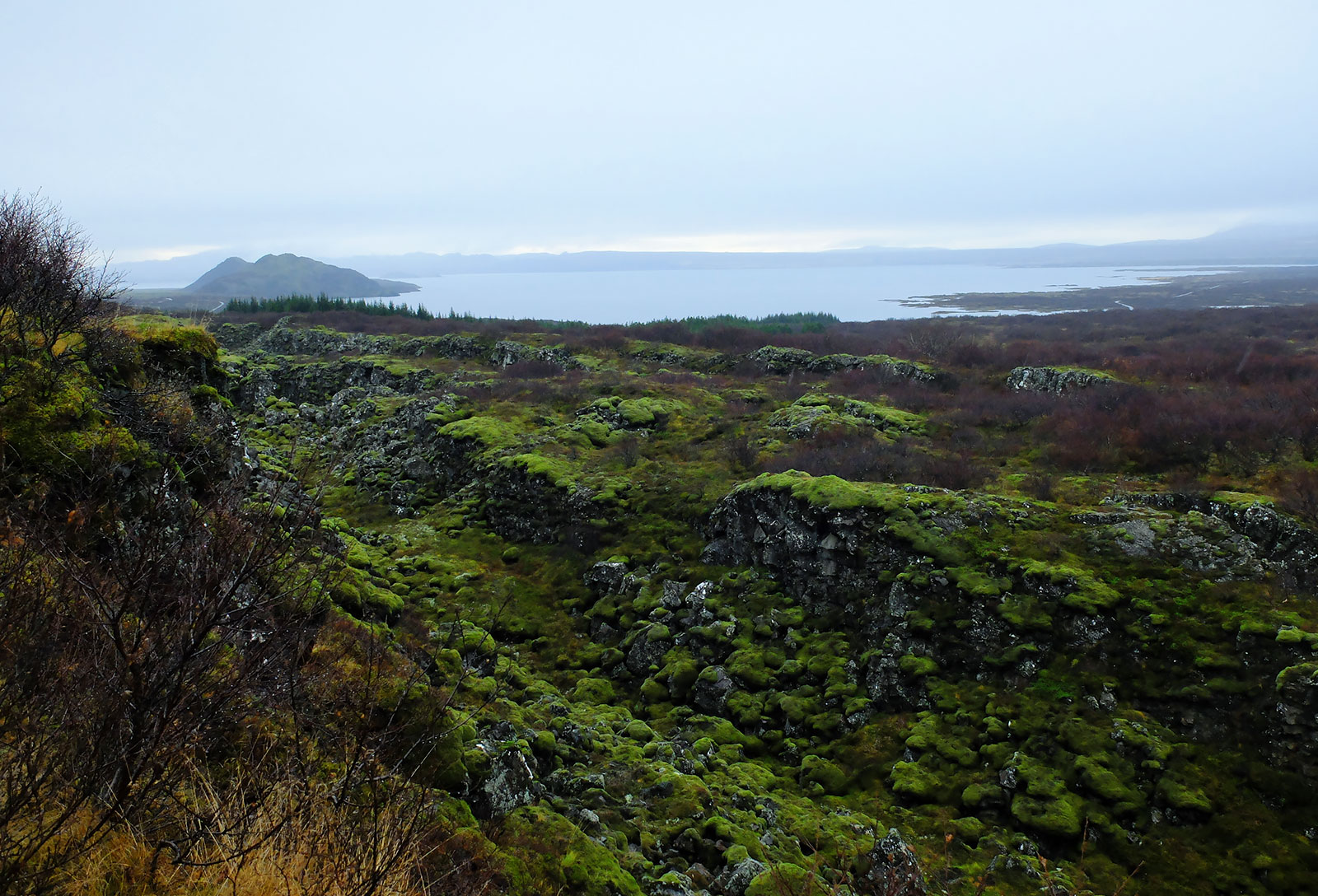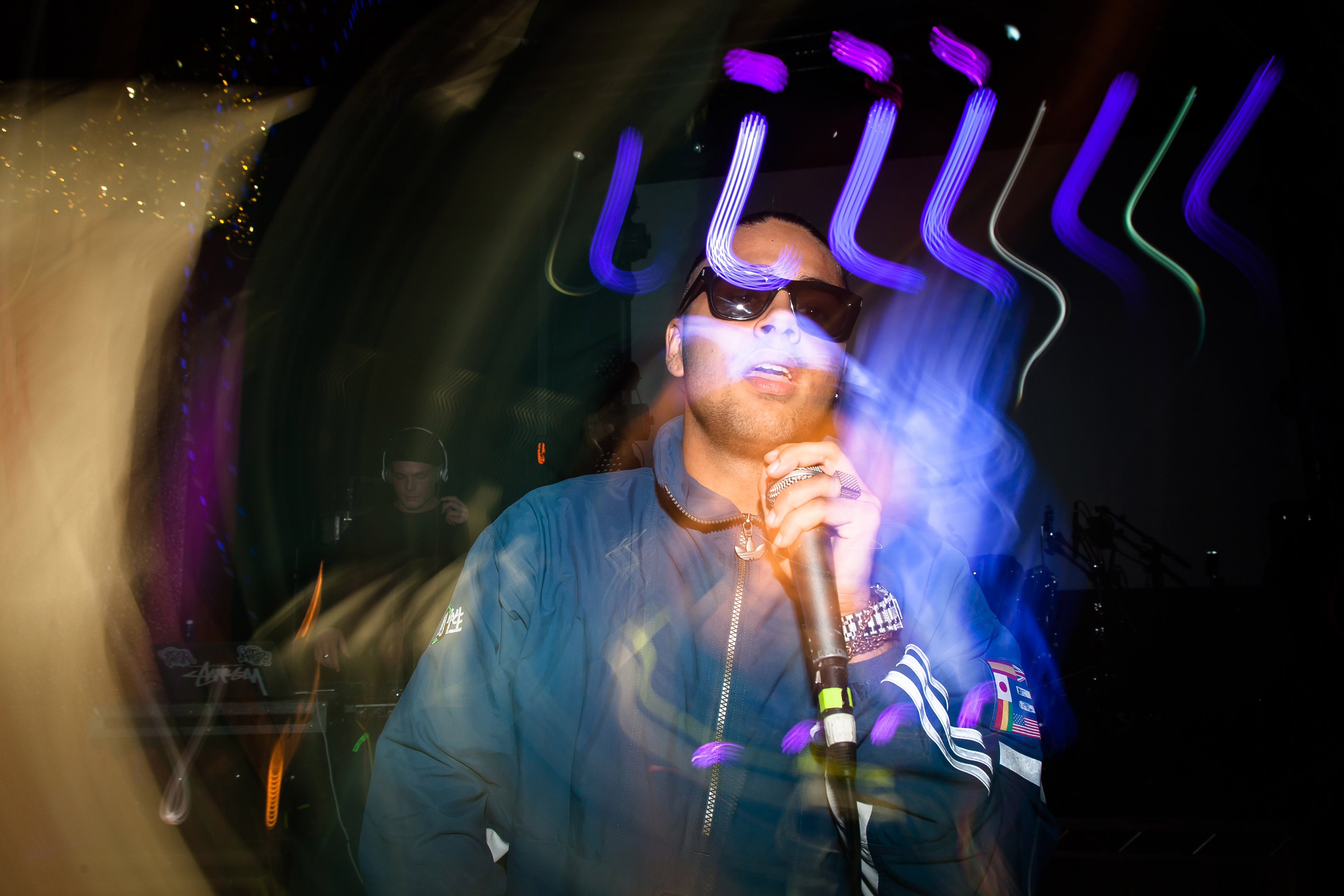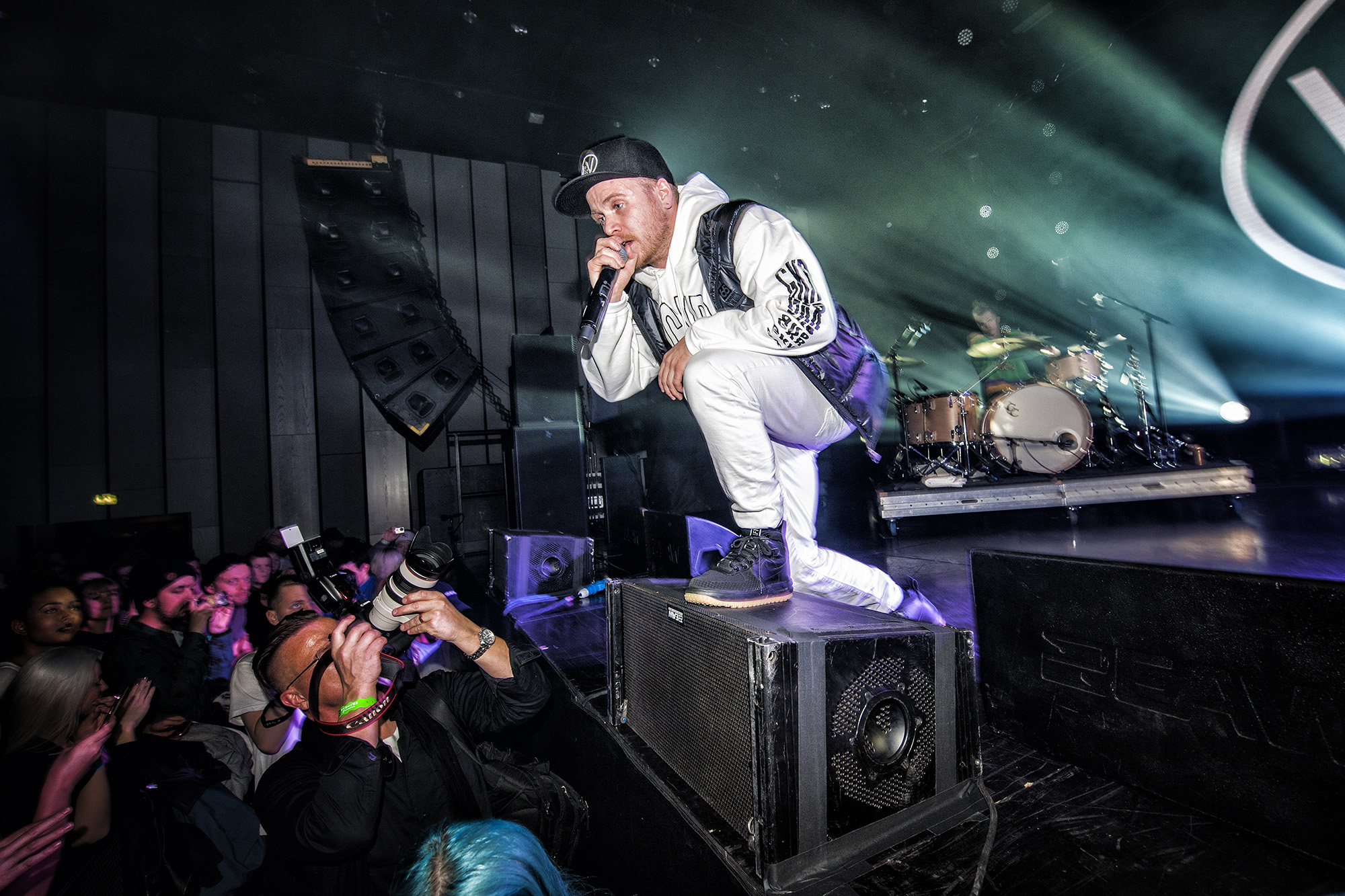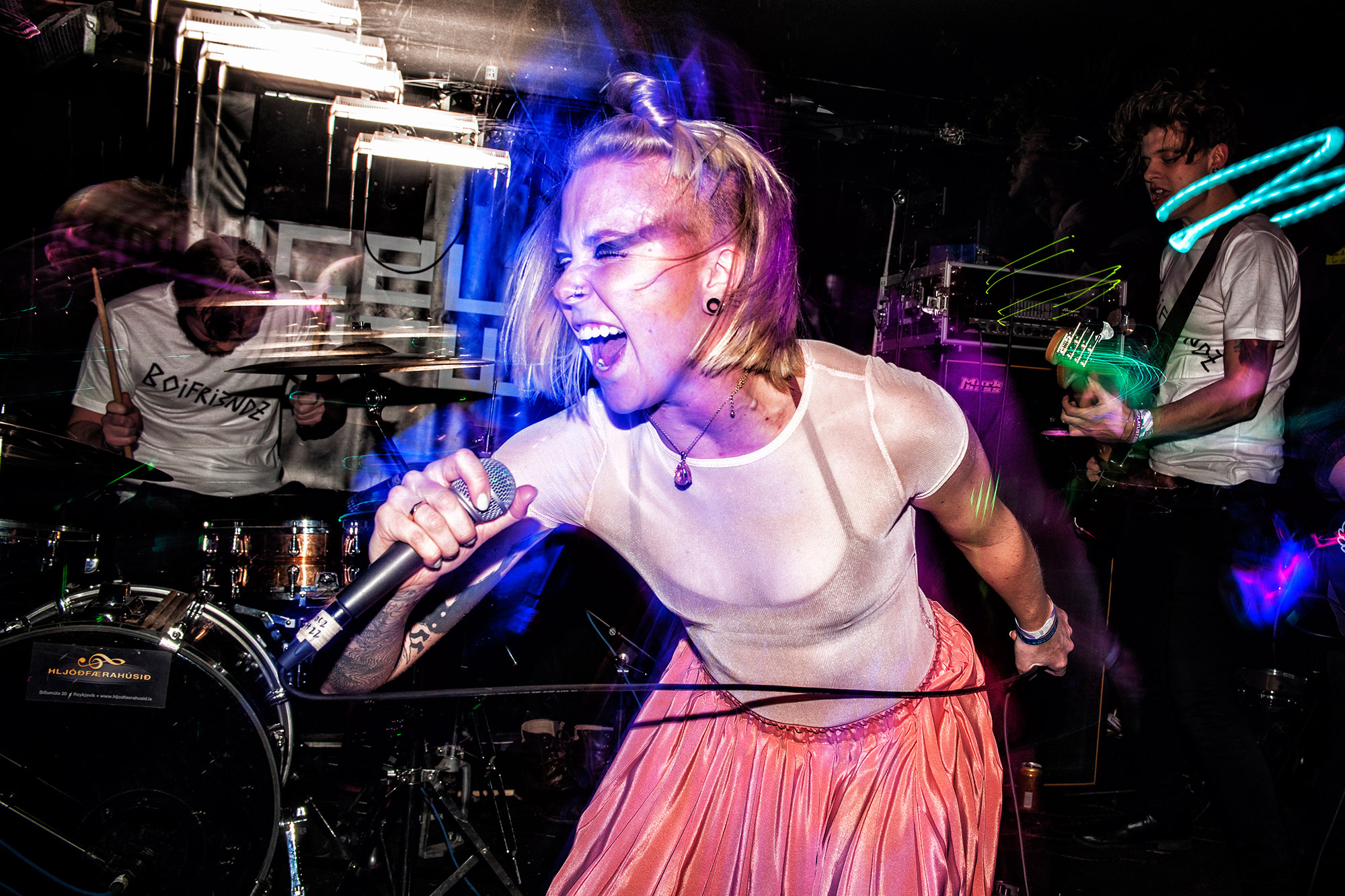Iceland shouldn’t be here. The land itself—black and loamy, owing to the immense lava fields, and oddly elegant even when piled at one of the country’s many construction sites—is a result of its positioning at the nexus of the North American and European continental plates. It is Arctic in the literal sense: the Circle passes through the small island of Grímsey, off of the coast, and Reykjavik (as every tourist shop will tell you) is the northernmost capital in the world.
For the past five years, Iceland has relied heavily on the tourism industry to pull it out of a deep financial crisis that began in 2008 and culminated in the jailing of the bankers responsible for the crash. This year, nearly 2 million foreigners will visit, and the number of American tourists alone is expected to eclipse the population of the country. While these figures are stunning—and the number of cranes currently erected in Reykjavik suggests that they’re projecting upwards—the financial presence of so many people in such a small country has a noticeable impact; Laugavegur, the city’s main commercial artery, is dotted with shops selling stuffed puffins and boxes of hákarl, the rotten shark snack that, from what I can tell, nobody born in Iceland wants much to do with. It may be small stakes in an increasingly globalized world, but there is no shortage of Subways and Domino’s here, and the combination KFC/Taco Bell on the road in from the airport is big enough to house a Viking parliament.
While the scenery (which is even more breathtaking than you’ve heard) is certainly responsible for much of that tourism boom, many North Americans’ introduction to Iceland came many years before the financial downturn via Björk and Sigur Rós, two artists whose music arrived on American shores fully formed and so unlike anything else it seemed to have been carved from its home country’s ice, whipped from the neon ether of the Northern Lights. Coupled with the land itself, it’s difficult to conceive of Iceland apart from sublime beauty and mind-expanding vistas.

Þingvellir National Park / photo by Marty Sartini Garner
And as any Icelander will tell you, sublime beauty loses its potency over time. Daily life in Reykjavik is no different from daily life in Akron or Bangor or Sheboygan. Paying bills, navigating relationships, raising kids: the glow of the Northern Lights do not leave them illuminated.
So where does that mean for a music scene that, in the popular imagination at least, seems to be based around the same? What does it mean to be an Icelandic musician in a world that is slowly growing accustomed to the country’s otherworldliness? Whether consciously or not, Iceland Airwaves, the country’s preeminent music festival, offers an answer. A few major and mid-major international names—PJ Harvey, Digable Planets, The Internet, Julia Holter, Kevin Morby—provide the draw, but the lion’s share of the lineup is comprised of Icelandic bands: hundreds of them, to the point that local non-scientific claim that the country has more bands per capita than any other on earth hardly needs to be tested. The Airwaves lineup is stylistically diverse, highlighting the variety of sounds being created by what is a ridiculously small group of people.

Aron Can at Nasa / photo courtesy of Iceland Airwaves
But at times it can be hard to tell what makes an act stylistically Icelandic, or whether that even matters. Consider Aron Can, a sixteen-year-old Rekyvíkingur R&B singer who packs the semi-legendary Nasa club on the first night of Airwaves. He’s a technically gifted singer who knows how to take control of a stage and a crowd in his swishy track jacket, but he makes no attempt to deviate from his thoroughly North American idiom; most of his songs sound like Icelandic versions of “The Hills,” and the line to see him stretches around Austurvöllur, the public square ringed by Café Paris, The English Pub, and American Bar (where someone is doing a very convincing cover of “Save Tonight”).
Emmsjé Gauti, who plays in a mid-sized room in the gorgeous performing arts center Harpa, makes a slightly stronger case. His flow and his voice are so similar to Ghostface that it takes a few moments for me to realize that he’s rapping in his native tongue. Gauti is one of the heavier hitters in a surprisingly robust Icelandic hip-hop scene, and despite his decidedly global sound, he reps his world fiercely. “This is our fucking city, bitches!” he shouts before dropping into “Reykjavik,” his love letter to the city, and the locals pop off while the video behind him loops a handful of drone shots of downtown. He raps with a New Yorker’s aggression, but he has the melodic sense of Drake, and it’s not hard to imagine him becoming very, very famous if he were ever to rap in English.

Emmsjé Gauti at Harpa / photo courtesy of Iceland Airwaves
Like any artist whose native tongue rarely makes appearances outside of their home, Icelandic musicians are forced to navigate strange linguistic waters. You can give yourself an Icelandic name, sing in your own language, and pump your way around your small Northern province, hoping to make enough cash to be able to do it again. Or you can go for broke—which in the music industry still almost always means embracing English and the particulars of American taste, as varied as they may be. Certainly, Sigur Rós and (to a somewhat lesser extent, linguistically speaking) Björk imposed themselves upon us, rarely making concessions and remaining resolute in their devotion to their own artistic vision. The world outside has simply given them a bigger stage and with it greater opportunities. But internationally speaking, they’re exceptions whose musical extremes prove the rule.
Of course, that assumes that long-term financial success and international superstardom is the goal, and in a city with a surprisingly rich punk-rock history, that’s not always the case. A few days after John Lydon oversees the grand opening of the Iceland Punk Museum, Kælan Mikla play a set of pitch-black synth shock at an otherwise cheery pub in the middle of the short daylight window, wrapping New Order gauze around Joy Division’s low-end pulse while singer Laufey Soffía Thórsdóttir occasionally sends her voice into a high cackle reminiscent of Cradle of Filth’s Dani Filth. Despite their grandeur (and on-point sense of style), their artistic vision still seems to be under development.

Tófa at Gaukurinn / photo courtesy of Iceland Airwaves
Tófa, meanwhile, go on late in a cramped upstairs punk club near the Reykjavik Museum of Art and play with the kind of goofy abandon you save for a hometown show. The sound is big and appealingly ugly, but Allie Doersch belts like Nancy Wilson, and the quivering guitar noise that’s largely nulled by the shape of the room suggests an intimacy with Perfect Pussy’s Say Yes to Love.
But Airwaves’ best acts all seem to be working from the template set by their more famous countrymen. Whether by ability or by choice, rapper GKR, who plays the predictably depressing American Bar (the picture in your head is the correct one), never utters a word of English as he skulks around the stage. He’s a short, rangy kid with ratty ear-length blond hair, and he wears an oversized yellow hoodie with his name on it. You get the sense that he’s what Justin Bieberwould be like if he’d grown up watching Justin Bieber, but there’s a softness to his flow that suggests a certain kind of vulnerability. His between-song banter is muted, and the crowd—who seem to have followed him in from a gig at the Hard Rock Café up the street—eat it up, particularly “Morgunmatur,” whose trap drums and guitar-and-flute beat suggest, like, OG Maco collaborating with Enya. It is by far the best song I hear all weekend.

Reykjavíkurdætur at Harpa / photo courtesy of Iceland Airwaves
Reykjavíkurdætur, who if you’ve read anything about Airwaves you’ve certainly already encountered, are a sixteen-piece feminist hip-hop group who I see opening for a first-time-in-Iceland Dizzee Rascal. They strut around the stage with pulled-back hair and matching black bathing suits and men’s oxford shirts that make them look like a synchronized swim team that’s just raided a J. Crew. Some of the MCs are more commanding than others, but their beats are slinky and thick, and they work the (adoring, adoring) crowd hard: “This next song is about dancing as a form of meditation, so please just dance,” one of the sixteen says before dropping a tropical beat with a coconut chorus. “This next song we made for a thing called the Slutwalk, which pretty much says you can dress however you like, you can drink as much as you want, you can walk around naked and you’re still not asking to be raped,” she says before another. They’re surprisingly good, surprisingly melodic; there’s enough gimmick here to appeal despite the language barrier, and there’s more than enough talent behind the gimmick to make it work.
And then there is dj flugvél og geimskimp (“Airplane and Spaceship”) a manic Rekyvíkingur collagist and vocal magpie who is something of a pastiche of Grimes and the sweet precociousness of The Unicorns, held in check by a vaguely menacing threat that reminds me of an elfin Gazelle Twin. That’s an Icelandic stereotype, “elfin,” but it’s hard to think of another word for the way she leaps from sequencers to the front of the stage, shooting off the occasional confetti cannon and exhorting the crowd. She blasts hyper-bright Trapper Keeper doodles on the screen behind her that shift in connotation when she calls up a rainstorm of tribal drumming to pelt the sweet beat; it feels like watching Sung Tongs–era Animal Collective cross the peak without seeing the bad trip coming up the path. It’s fun, playful music, until it becomes weird and avant-garde and uncomfortable, and she presents it all matter-of-factly, as if freaking out a few friends in a beer hall is the most natural way to be.

dj flugvel og geimskimp at Gamla Bíó / photo courtesy of Iceland Airwaes
And maybe it is. Implicit in all its staging—stunning classical sets from Nico Muhly and múm and Kronos Quartet, Björk singing before the Icelandic Symphony Orchestra in haute couture and face-concealing headpiece like a glamorous Saturnine grande dame, the mid-aughts emo revival rearing its ugly head in the Nordic countries—is the idea that music’s primary purpose is to delight and to move and to do so in a warm room with friends. “This is not world music, this is our music,” Belgian-Congolese singer Baloji says while sirens wail and his band slushes through a bright benga chord progression, and it takes a better cynic than me to disagree.
Only an hour earlier, during Aron Can’s set on the same stage, I sat in a corner and checked my phone. A guy in front of me—young, close-cropped hair, still in his service blacks—showed up by himself, clearly just off of work for the night. He ordered a pint of Gull and let it loosen him up, and as Can spread his love for the devoted house of fellow Rekyvíkingurs, he rapped along to every single word, and I didn’t understand any of them. FL







